Decorating & Design
January 10, 2017
12 Tips To Keep Your Kids’ Rooms Tidy This Year (Finally!)
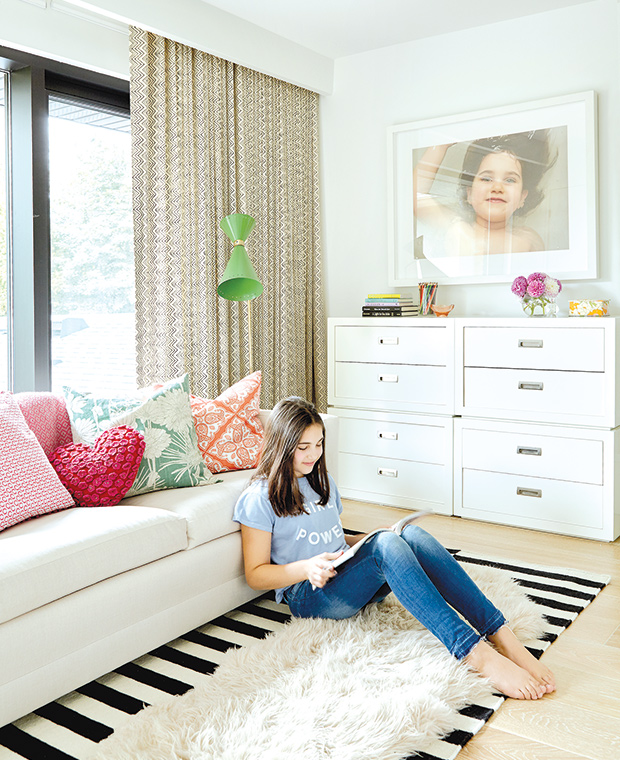
The myriad tiny pieces of Lego. The random socks that will never find a mate. The mysterious piles of paper that magically morph into missing homework. This is the stuff of kids’ rooms that requires superior wrangling skills on the part of parents and designers. Here are some organized kids’ rooms that offer a master class in neatness.
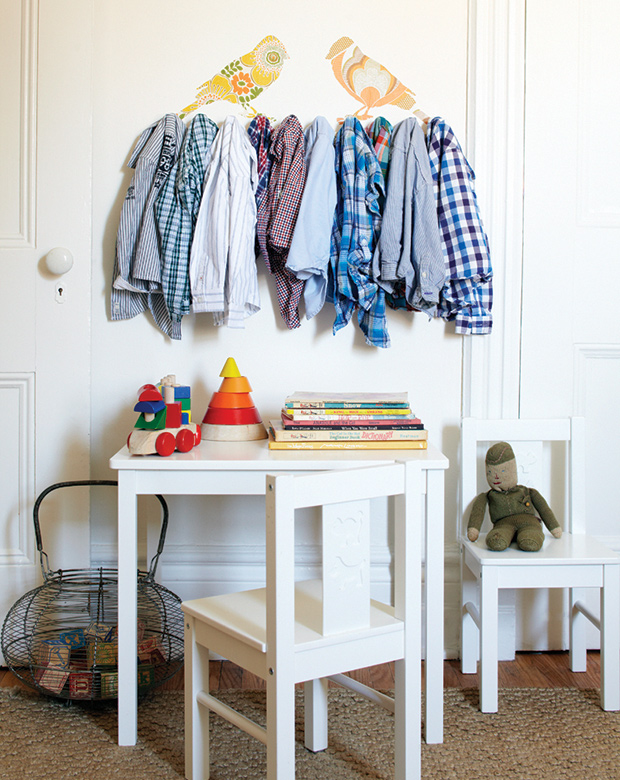
Designer Emma Reddington skips the folding and hung a row of her son’s shirts so their checked patterns and colors are incorporated into the decor. It also makes them easy to grab in the morning, so getting dressed and out the door to school is less of a chore.
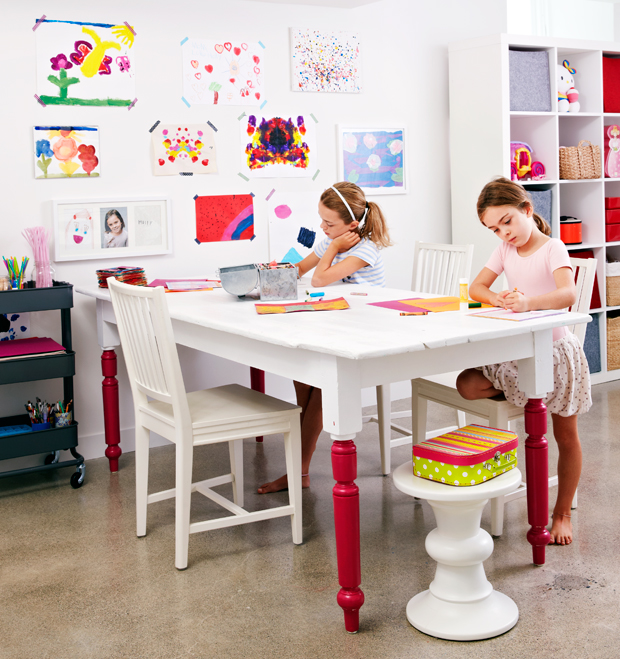
Art projects and supplies take up a lot of room, but a large table lets siblings get creative at the same time. H&H senior editor Sally Armstrong gave her dining set a playful twist with color-blocked white and hot pink paint. Artwork is taped to the wall with easy-to-remove washi tape, for a rotating gallery of masterpieces. An inexpensive Ikea bookshelf and trolley hold craft supplies.
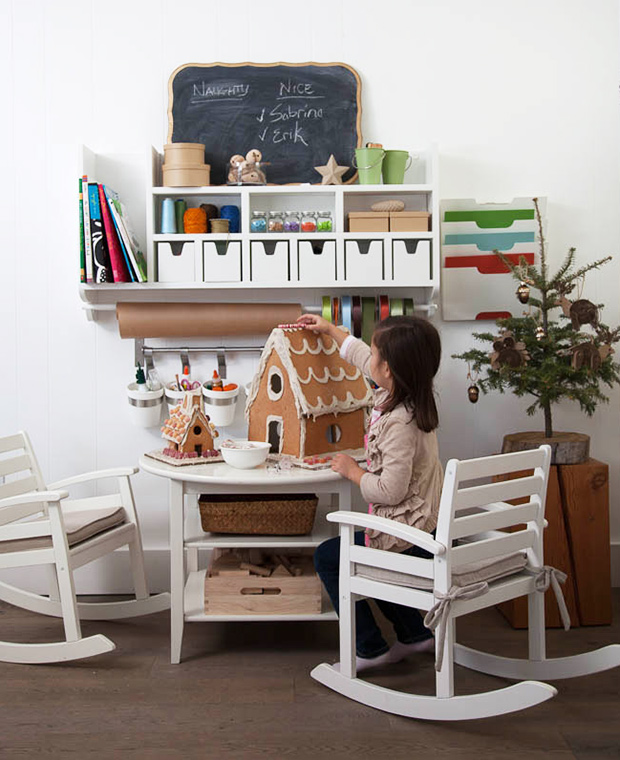
Designer Grace Castaneda created this smart all-in-one solution for her daughter, which uses Ikea components such as a paper holder and cubbies. It keeps her child’s craft supplies organized and at her fingertips so she can work on projects happily for hours.
Editor’s tip: Hang the storage cubbies low so kids can reach their supplies, and put them away when finished with a project.
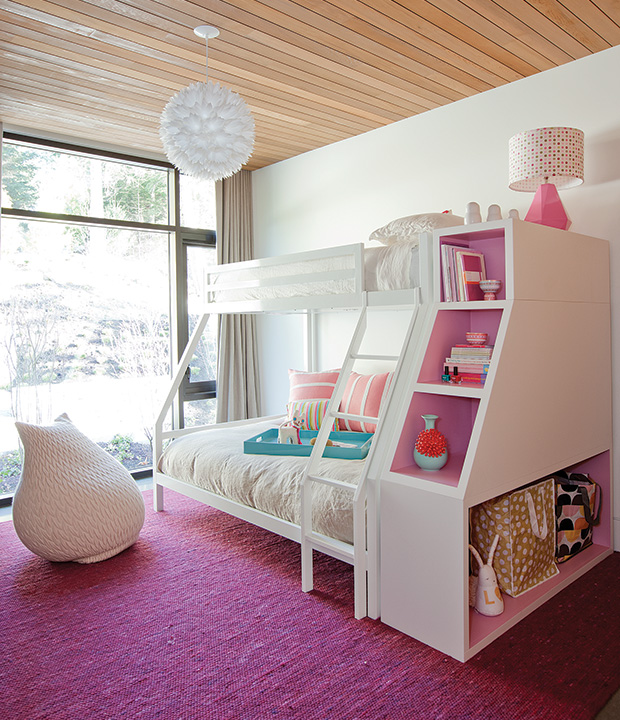
McCarthy Hinder Interior Design designed this storage unit with painted-pink cubby holes to make the bed feel more enclosed and create a spot to display collectibles for this B.C. family. The added bonus of this bunk bed shelving unit is that it also provides a spot for a reading lamp on the top bunk.

Kids love to collect and show off their prized possessions, so create a spot just for them to style up favorite keepsakes — and change them up easily since passions are often fleeting as a child. Picture rails and hanging boxes serve dual purpose as storage and display in the basement of Sarah Hartill’s home, where her boys change up what’s on show almost daily.
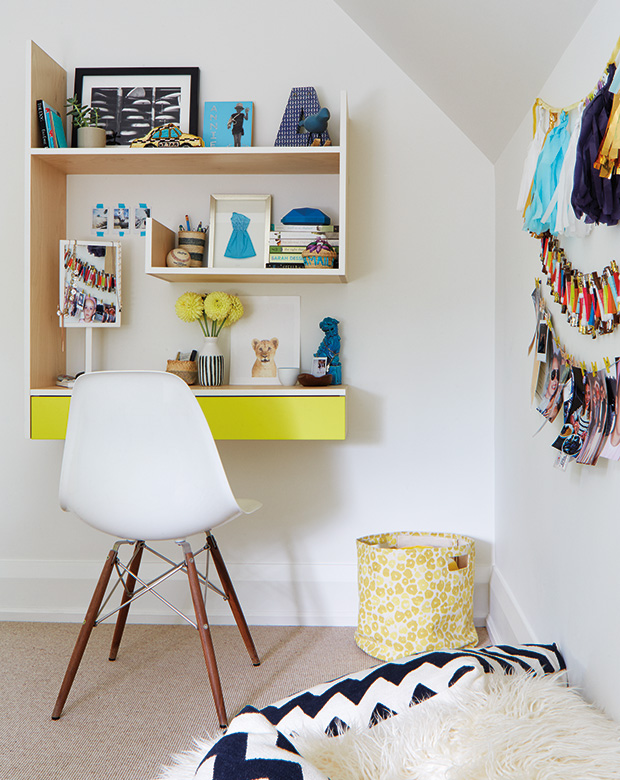
This custom floating desk in the room of Annie, the daughter of H&H senior design editor Sally Armstrong, was inspired by a modern retail display unit, but doesn’t eat up floor space in a compact room. The return edges act as a book end to keep items from falling off, but the shelving unit still looks airy.
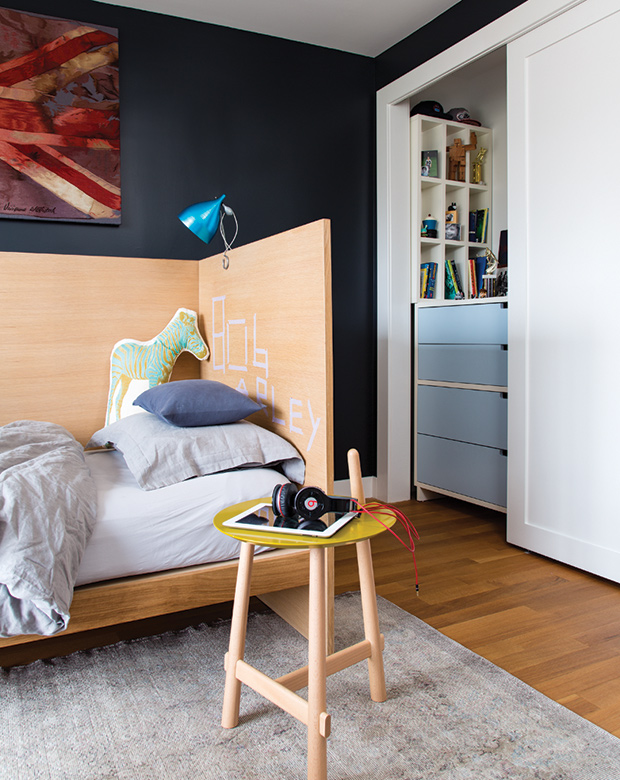
Designer Ashley Botten fitted the closet of 11-year-old Lucas with built-in cubbies and a dresser that are too good looking to cover up, so no door is required. Pale blue drawer fronts add a splash of color.
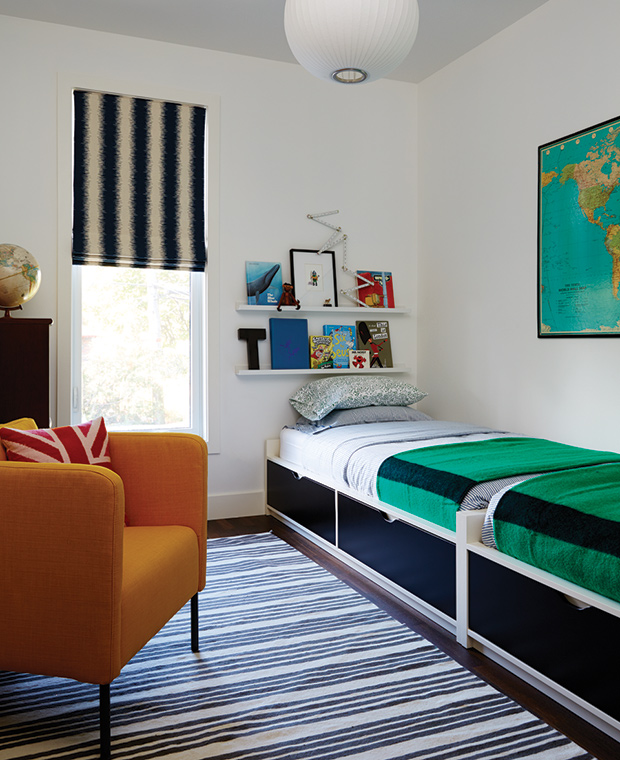
Kids need room to play, so designer Sarah Hartill placed twin beds end-to-end to make them read as one unit, leaving lots of space on the floor. Toys can be easily tucked into the drawers underneath the beds when the fun is over, and open shelving means easy access to books at story time.

The beauty of bins is that they can help encourage children to group similar items (it’s never too early to get a jump on organization skills). Their portability makes them easy to tuck out of the way.

Why stop at one row? Designer Shirley Meisels amped up the storage in her daughter’s room by stacking the dressers, creating more space for stuff without changing the room layout.
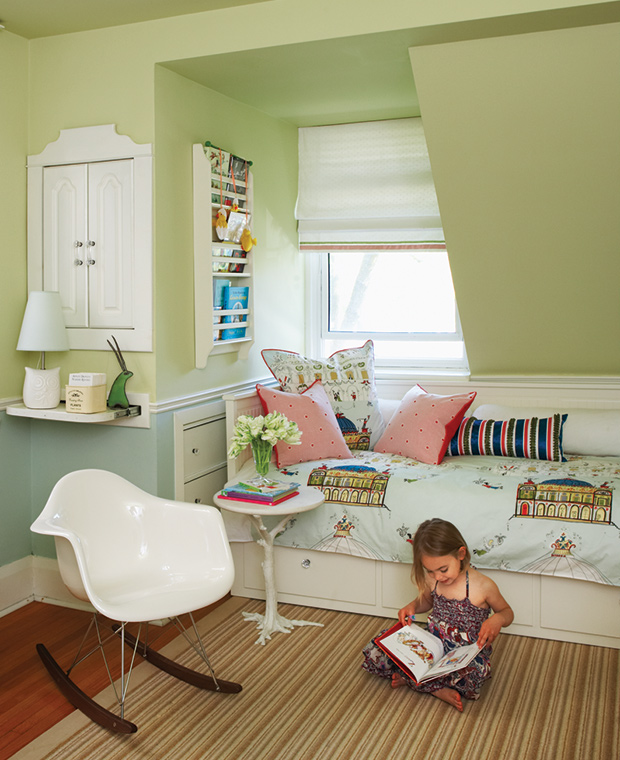
In the 1,100-square-foot home of designer Cindy Bleeks, every inch counts. In the bedroom shared by her two children, she built cubbies into eaves and added a small pull-out surface for a light.

Clean, flat-front pullout drawers carve out storage were there was none. Since the drawers are low to the floor, skip the hardware in favor of simple finger pulls so there’s no projection to trip up kids as they pass by.

